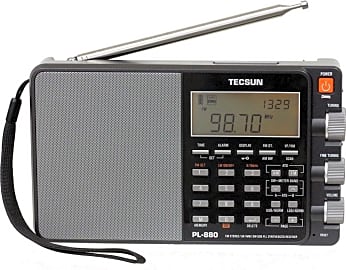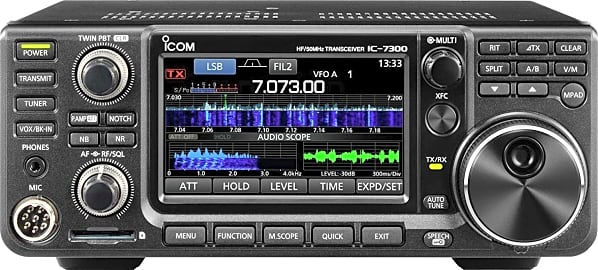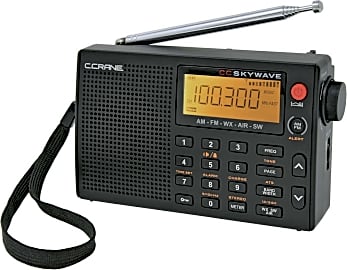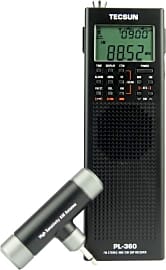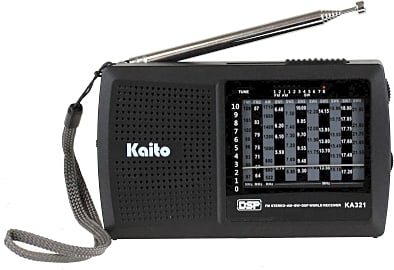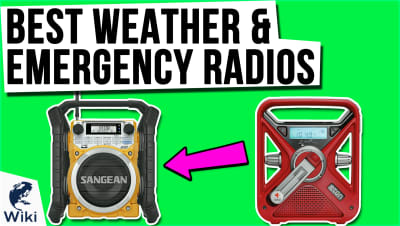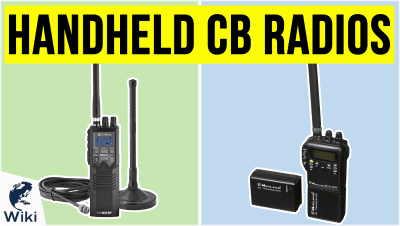The 10 Best Shortwave Radios

This wiki has been updated 39 times since it was first published in August of 2015. For all you hams out there, as well as anyone who wants an emergency notification system in the event of a natural disaster, take a look at our selection of shortwave radios. While the waves may be short, their range is quite long, and these receivers might just keep you up all night discovering music and information from all over the world. Here, we've included both tabletop and portable options. When users buy our independently chosen editorial selections, we may earn commissions to help fund the Wiki.
Editor's Notes
September 03, 2020:
In this list, you'll still find a variety of options to suit the needs of casual and serious shortwave radio enthusiasts alike (not to mention everyone in between). Three entries have been removed and replaced: the Eton NGWFBTB, Retekess V115, and Kaito KA550. The aforementioned models were either outdated or unavailable, and the Kaito KA321, Retekess TR102, and Eton Elite Field were added in their place. The new products generally boast sleeker designs and a wider range programming features to suit the diverse needs of users. If you happen to be looking for a radio that can be used in the case of an unexpected event, our list of weather and emergency radios may help you locate the right device for your specific needs.
May 03, 2019:
Whether you're an expert or just beginning your foray into amateur radio, there's a suitable option in this list for you. Our choices range from no-frills, easy-to-operate models to more elaborate, customizable units crafted for serious — or even professional — listening. Some of the features we looked for while compiling this collection were superior reception, broad frequency ranges, powerful transmitters, and, of course, ports for plugging in USB cables, SD cards, microphones, and more. There are also several options that are ideal for the outdoors, with waterproof, impact-resistant housing that can stand up to unexpected weather conditions.
The Icom 7300 is new to the list, added for its heavy-duty desktop design and incredible number of features.
Note that Icom 7300 should not be placed in transmit mode anywhere in the world unless one is fully licensed as a radio amateur by a governing body. Failure to comply could result in severe legal penalties.
Another new addition is the XHData D-328, which should please users who prefer old-school analog displays to digital ones. The Kaito Voyager Pro KA600 was removed due to multiple complaints about various functions failing.
Special Honors
Supersonic SC-1097BT This radio has a retro appearance that will appeal to folks who are interested in using it as a boombox more than as a surveillance and/or communication tool. It comes with a 90-day limited warranty, too, so you can test it out before committing. newegg.com
The Longwave Shortwave From a respected gadget retailer comes this nifty device, which can pick up an impressive range of signals. You can save up to 100 stations via its easy-to-use interface, and it runs on either AC power or D batteries, so you can take it with you on the go. hammacher.com
HQ Issue Multi-Band Dynamo Outdoors enthusiasts will appreciate this model, which is designed to withstand the elements. Perhaps the most interesting detail is its mini solar panel — a feature that will appeal to those whose journeys lead them far from typical sources of electricity. sportsmansguide.com
Shortwave Radio Basics
Also known as high frequency, shortwave is transmitted just above the AM band on the radio spectrum.
Shortwave radios provide an inexpensive, low-tech way for anyone in any part of the world to receive radio transmissions. Also known as high frequency, shortwave is transmitted just above the AM band on the radio spectrum. Radio waves at this frequency are reflected back to Earth from the ionosphere instead of being absorbed, allowing the signal to travel thousands of miles.
While originally developed for emergency military transmissions, shortwave is now used by governments, private organizations and amateurs alike to reach large populations across the globe. Because they travel such great distances, shortwave communications are not always as clear as your local FM station. Atmospheric conditions can even cause the signal to fade in and out, and you are more likely to get interference from stations on adjacent frequencies.
With all the advanced technology you have in your house, you may wonder if listening to shortwave radio is worth the trouble, but part of the allure is the chance to explore stations from other countries and discover the unknown. A portion of the shortwave spectrum is even designated for amateurs who want to talk back and forth in two-way communication.
The practical advantage of having a shortwave radio is that it remains the only way to make direct communication from one country to another without an intermediary such as a satellite or cable company. In the event of a global disaster or zombie apocalypse, you'll be able to stay connected with the rest of the planet.
Even if the world isn't coming to an end, a shortwave radio is an important part of any emergency preparedness kit. Many models are available with solar panels or even a hand crank so they are guaranteed to function under any circumstances.
What's on Shortwave Radio?
Before the advent of the internet, shortwave radio was the primary way many expats kept in touch with their homeland. Gaggles of college students would huddle around shortwave radios to listen to their national teams play soccer games and other sporting events. Families would forgo the nightly news on TV in favor of broadcasts from home.
Gaggles of college students would huddle around shortwave radios to listen to their national teams play soccer games and other sporting events.
Because of the internet and the proliferation of dozens of cable news channels, some governments have closed down or reduced their shortwave offerings. Despite this disappointing development, the shortwave spectrum continues to offer a vast landscape of programming options. There is still an avid community of shortwave hobbyists listening to and creating interesting and original content.
Aside from stations run by governments and major religious organizations, there are a few privately-owned international stations that sell blocks of airtime to a variety of groups to provide a wide range of music, entertainment and educational programs. Segments of the spectrum are also blocked off for amateur usage, marine communications and other utility functions.
One can argue that modern communications is killing shortwave listenership, but it is also making it easier than ever to explore the high frequency universe. There are websites devoted to providing schedules of shortwave programming and even smartphone apps that list schedules and report ever-changing frequencies to help you track your favorite stations.
A Brief History of the Shortwave Radio
The invention of shortwave radio technology is often attributed to Nobel Laureate and radio pioneer Guglielmo Marconi. He and his assistant Charles Samuel Franklin began a large-scale study in 1923 to determine if short wavelengths were suitable for long distance transmissions. His work led to the creation of the Beam Wireless Service that connected the United Kingdom to Canada in 1926. The service was expanded to Australia, South Africa and India in 1927.
Shortwave technology was such a cheap investment that it rapidly eclipsed the usage of the transoceanic cables for telegraph and television.
There is evidence that amateur radio operators were the first to propagate a transatlantic shortwave signal. The lowest-frequency band considered to be shortwave, 1.8-2.0 MHz, was deemed useless for long distance communications and designated for amateur use. It was within this “useless” frequency that hundreds of North American amateurs were heard in Europe in 1922. The first two-way communications between North American and Hawaiian amateurs were also recorded in 1922 at the same wavelength.
Having their own frequency and newly available vacuum tubes made it possible for radio amateurs to experiment and make significant strides in long distance usage of shortwave technology, including the first transatlantic two-way contact in 1923.
Shortwave technology was such a cheap investment that it rapidly eclipsed the usage of the transoceanic cables for telegraph and television. By the late 1920's, over half of of all long distance communications adopted the use of shortwave, ending the need for further investment new transoceanic cables and massive longwave wireless stations.



